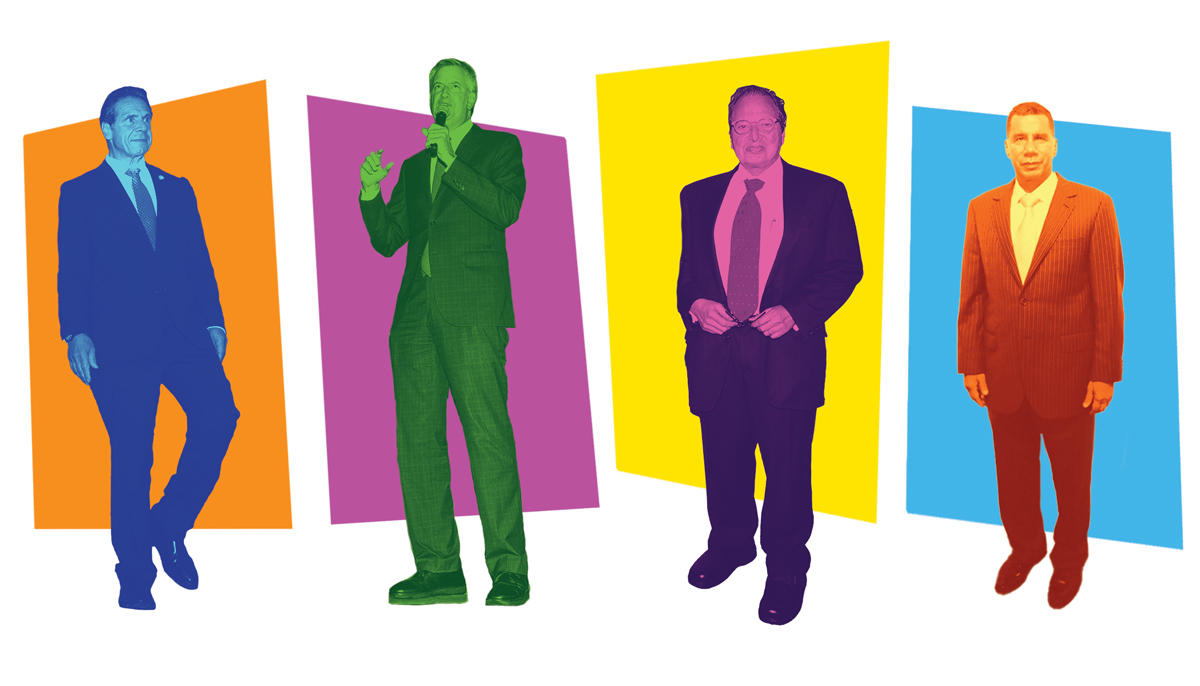Trending
Taxes at every turn
Behind the litany of levies facing New York City real estate

Roughly a year ago, the real estate industry successfully lobbied to thwart what its leaders said would be a devastating new tax.
The pied-à-terre tax would have slapped an annual excise of up to 4 percent on the value of second homes worth more than $5 million. Gov. Andrew Cuomo and the legislature — with the industry’s blessing — ultimately passed one-time transfer taxes instead.
But the PAT tax could make a comeback this legislative session. The bill’s sponsor, state Sen. Brad Hoylman, has indicated he will again push for it. Affordable housing advocates have also called for its return.
But that is hardly the only tax on the industry’s mind. In January, a city commission tasked with proposing reforms to city property taxes — which generate approximately 45 percent of city tax revenue — recommended they be based on true market value rather than assessed value. An industry coalition, Tax Equity Now, criticized the body for its lack of new ideas but has agreed that taxes should better reflect real-world worth.
The coalition, which includes such major developers as RXR Realty and the Durst Organization, is suing the city and state, alleging the system is unconstitutional because it disproportionately taxes low-income and minority homeowners and renters. The city and state agree that reform is needed but asked the Appellate Division to dismiss the suit, which it did Feb. 27. The coalition indicated that it plans to appeal.
The de Blasio administration has said the matter should be left to city and state lawmakers. But politicians’ reluctance to fix the system is why industry players sued in the first place. Any comprehensive reform would raise taxes for some property owners, a result for which few elected officials want to be blamed. Cuomo, for example, said last month that he will wait for the city to make the first move.
Meanwhile, state legislators are mulling changes to key property-tax breaks, such as J-51, the Relocation and Employment Assistance Program (REAP), the Industrial and Commercial Abatement Program (ICAP) and possibly 421a, now called Affordable New York.
Keeping track of New York’s dizzying array of taxes directly and indirectly affecting real estate is a challenge.
For now, here are the levies that most affect the industry in the city.
Property tax
New York City real estate is broken into four main categories. Residential properties are split between class 1 (one- to three-family homes) and class 2 (condominiums, co-ops and rental buildings). Most commercial properties fall within class 3, while regulated utilities’ properties such as power plants are in class 4. One controversial element of the tax system is its treatment of condos and co-ops, which are valued as if they were rental buildings — and in some cases, rent-regulated. That leads to owners of some trophy units paying a small fraction of their true value in taxes. Owners of houses in gentrified neighborhoods also underpay relative to their peers because their home values have risen faster than the law’s maximum 6 percent annual increase in assessed value on which they are taxed. Experts consider rental buildings to be overtaxed, although newer ones typically enjoy generous — if time-limited — abatements such as 421a.
Real estate transfer tax
Last year the state added a 0.25 percent tax on sales of residential properties for $3 million or more and of commercial properties for $2 million or more. That built on the existing state-level 0.4 percent transfer tax and New York City’s sliding rate of 1 percent to 1.425 percent. The maximum transfer tax rate now stands at 2.075 percent, which on a $20 million condo is $415,000. Sellers often pay the transfer taxes, though buyers of units in new developments can sometimes be on the hook for them. Sellers also sometimes have to pay flip taxes on co-op and condo units, the rates of which vary depending on the building and its board.
Mansion tax
The new “mansion tax” ranges from 0.25 to 2.9 percent, rising with the sale price, and is applied when properties are sold for $2 million or more. This was stacked on top of the old mansion tax, a 1 percent levy on residential properties sold for $1 million or more. The total maximum mansion tax rate — applied on sales of $25 million or more — is 3.9 percent.
Mortgage recording tax
It is popular among well-heeled buyers of New York real estate to pay cash, which makes for quicker sales and avoids a tax on recorded mortgages. But buyers in the five boroughs who must borrow will pay the city and state for the privilege of recording the mortgage with the government, which provides the parties to the transaction some protection in the event of a dispute arising in the future. Mortgages under $500,000 are taxed at a combined 1.8 percent and larger loans at 1.925 percent. For a $1 million loan, that adds $19,250 to closing costs. One other way to avoid this tax is to buy a co-op: Technically, you are buying shares, not real property, so the mortgage recording tax does not apply.
Millionaires’ tax
Back in 2009, as the financial crisis sent state revenues plunging and progressives criticized the flat state income tax rate of 6.85 percent, Gov. David Paterson enacted what was billed as a three-year tax hike on millionaires: 7.85 percent on individuals earning $300,000 or couples making $500,000, and 8.97 percent on higher earners. The rates and thresholds have since been tweaked in taxpayers’ favor, but the bottom line is the tax is still going strong. Last year, the state extended it for another five years at a rate of 8.82 percent on income above about $1.08 million for individuals and above roughly $2.16 million for joint filers. Top earners who own or rent property here risk the wrath of city and state tax authorities if they claim to be nonresidents and therefore exempt from New York’s levies, which are among the highest in the U.S.
Commercial rent tax
In the city, this tax is applied to commercial tenants south of 96th Street in Manhattan who pay annual rent of at least $250,000. Some businesses are exempt, such as nonprofits and theatrical productions, as are certain short-term leases, and the threshold was raised to $500,000 for small businesses in 2017. The rate is 6 percent of the base rent. However, because a 35 percent rent reduction is permitted in calculating base rent, the effective tax rate is 3.9 percent. Tax credits are also available if base rent before the 35 percent reduction is between $200,000 and $300,000. Florida is the only other place in the U.S. with a commercial rent tax.
Capital gains tax
The federal government taxes profits on the sale of capital assets at lower rates than it does ordinary income. Not New York, though: The city and state tax capital gains just as they do income. So folks who sell property for substantially more than they paid will want to sock some of the profit away for tax time, especially if it is enough to subject them to the millionaires’ tax. City income tax rates range from just over 3 percent to nearly 4 percent, and state rates from 4 percent to the aforementioned 8.82 percent.




